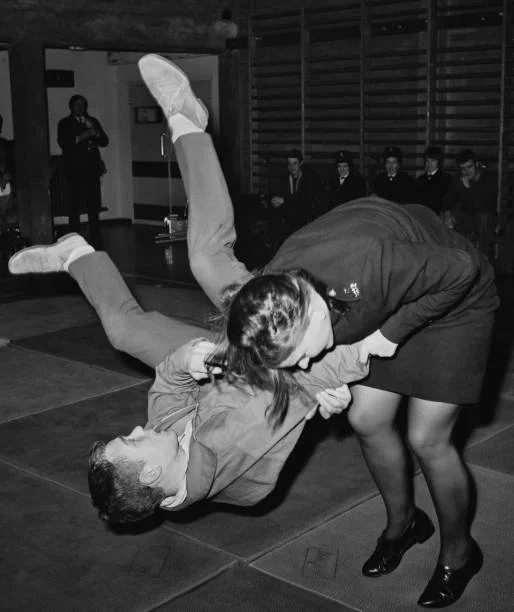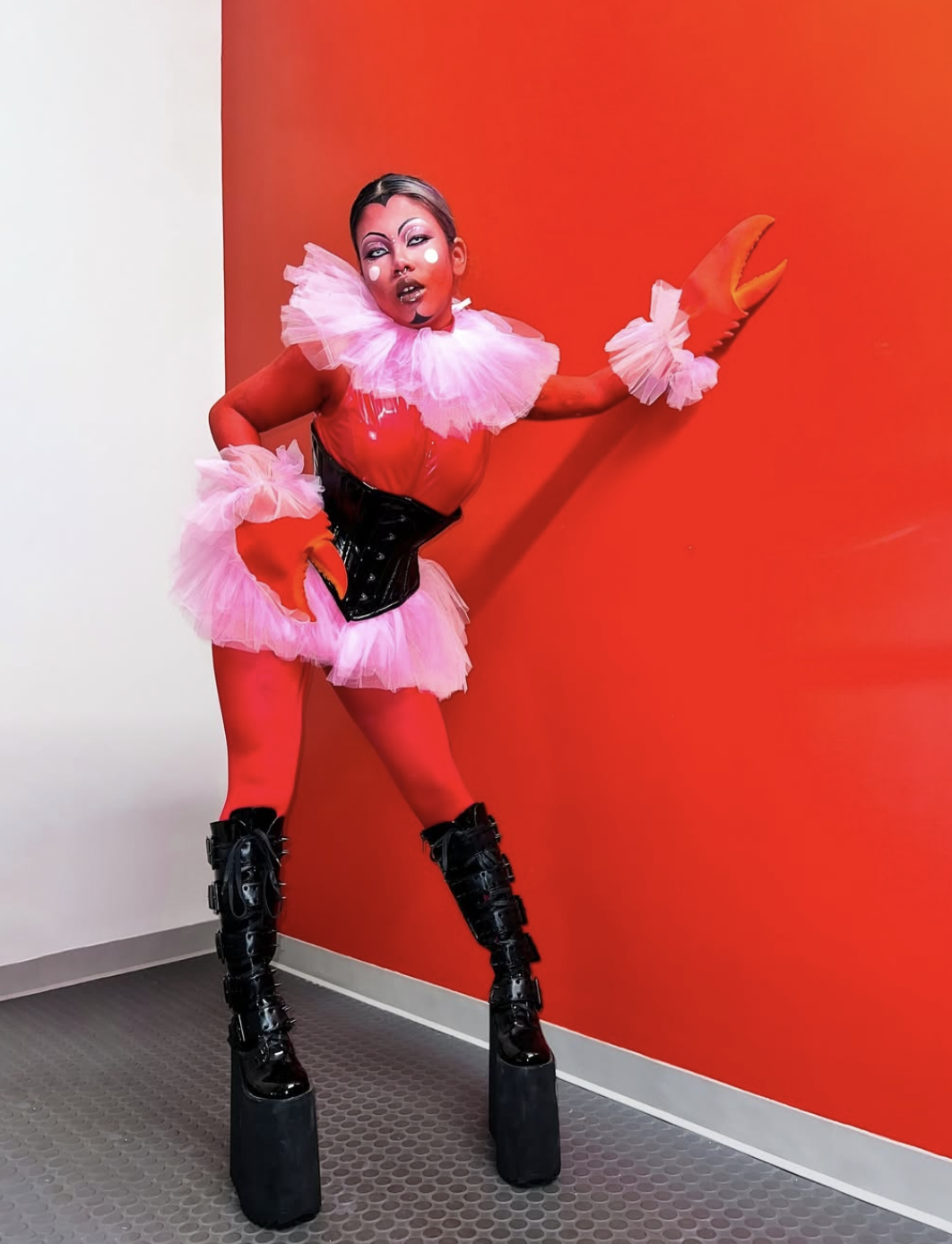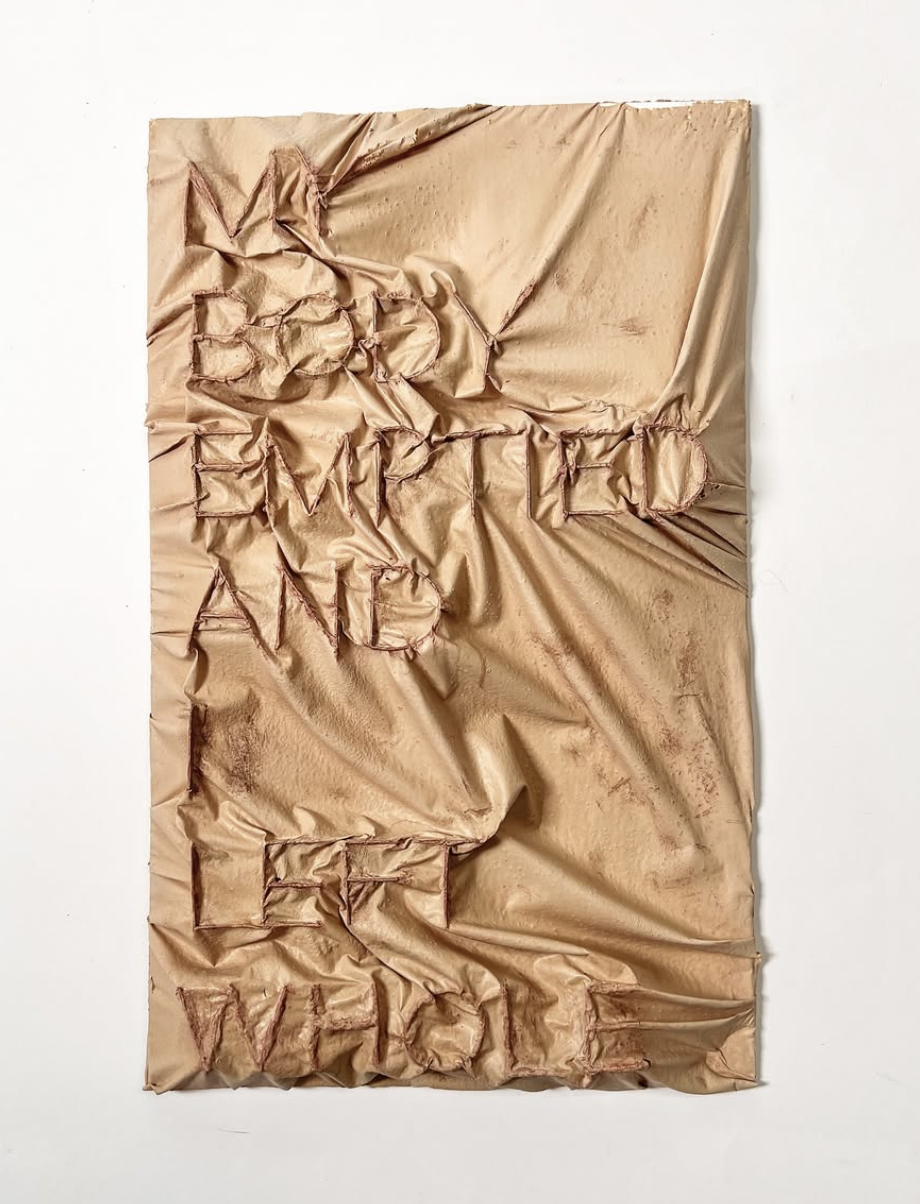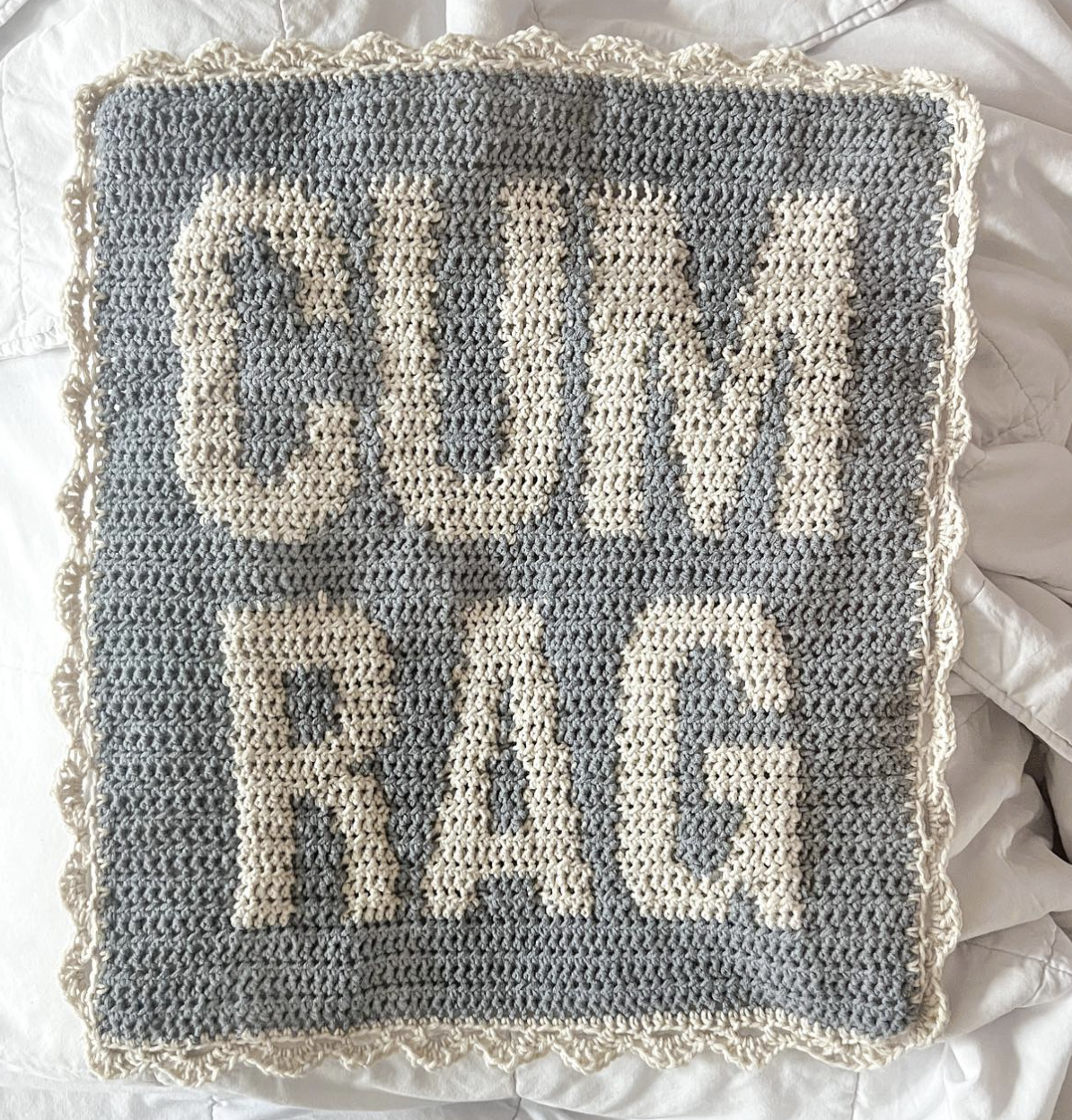Chanya Vitayakul
Chanya Vitayakul: @chanyaz
CHANYA and I met through our mutual interest in the word “cunt”. We are both artists who investigate the remnants of trauma on the body, the ugly truths of violence and public shaming, and the softness that follows the free expression of anger. Outside of that we just clicked, and I’m so happy a word as versatile as “cunt” could begin a lifelong friendship.
Chanya, born and raised in Bangkok, is simply one of the coolest people you’ve ever seen. Their style is insane and emulative of a mega-hot, punk fairy, razor sharp taloned, angelic doll any crazy kid would have begged their mother for. There’s no possible way for this review to only contain their art, because Chanya’s simple presence and presentation is a gift to your eyes.
Chanya studied graphic design at RISD, but that label hardly covers the breadth of their work. Words are their power, design is their delivery, material is their investigation. Material is malleable in Chanya’s practice, they don’t constrain themselves to 2D media. They use their skin, their body, arduous labor and poetry to force the viewer to see and hear reality.
Their most notable confrontations concern their experience with pregnancy and abortion. Instead of allowing the pressure to save face derail their voice, they erect massive prints of their story and the bodily experience of holding the fetus. It is beautiful, unrelenting, and so truthful it becomes tangible. I have yet to see another story about abortion written so plainly while also choosing words so carefully. There is a fine line between poetry that investigates hard truths through romantic abstractions and poetry that brings our eyes to an otherworldly mind. Chanya chooses the ladder, and that’s what makes them special.
Chanya’s work is as interwoven with story as it is body. As a nonbinary person whose style is just as much an art piece as their work, Chanya allows “womb” to become a space beyond gender, which is probably why the emotional pain and physicality of their experience is so raw. We are left with touch, texture, fluid, bond. It is about the body and the growth of a fetus in a way that is something beyond maternal.
Chanya’s work treats the body as a barrier, a private place that can be trespassed, a home for the soul. Their discussion, or rather their statements and questions, about reconciling with ourselves post violation don’t give us answers, but battles. They ask us how we come back to ourselves, tell us who they are as someone who is angry, and hurt, and fighting all at the same time. They combine the trials they’ve overcome with the magic of trans joy, the endless possibilities of identity, and their obsession with kewpie angels.
Get ready to have your world rocked by the one, the only, Chanya Vitayakul. The cuntiest cunt you’ve ever met.
@chanyaz
What were you like as a kid? How the hell did you get into your style, and what is your favorite part of dress up?
I don’t know how to describe little Chanya exactly; I had an obsessive interest in dinosaurs and reptiles. Growing up with an older brother (who wanted a younger brother, not a sister) meant I always had to dress like a boy like all the time. It was my first experience with androgyny, really (I started experimenting with femme clothing much later on in my adolescent years). It made me feel like I was always performing, while also hiding at the same time. Style was my first language of disobedience. I remember wanting to shave my head so bad as a kid, but my mom didn’t let me (obviously). That made me start liking to see where my mother’s patience ended. My favorite part of dress-up is the moment right before you see yourself in the mirror. When you’re still becoming, still an idea, before the world projects anything back at you.
What and who were your fashion influences in Thailand?
I remember my mother took me to Khao San Road (which is essentially known as the tourist party street/where other international school kids sneak out to party in highschool) because I wanted to see what the craze was about. Khao San would have these street vendors selling fucked-up English phrases on bracelets, and they’re the most random words strung together. I remember begging my mom to get me one that said “unicorn cunt.” She did, but she also got another one for me that said “i heart my mom.” Mom was and always will be someone so inspiring to me also. She hated matching sets and outfits that “made sense.” There is no doubt I got my weird from her. She also took me to a Lady Gaga Concert in 2012 and I think that changed my life. She also showed me who Sasha Velour is, and I never approached fashion the same ever since.
I feel like there’s two types of Chanya we get. Everyday Chanya – which is still doing way more than the average bear – and alien supernova Chanya, a fabulous display of costume and makeup, somehow drag, somehow still emulative of the you we see everyday. When you’re crafting a look, where do you start?
I start with whatever is clawing at my ribs that day. The alien supernova me is just the everyday me turned inside out, all the hidden, twitching parts shown under bright lights I guess. I love how you call this version of me drag; transforming into something otherworldly, either for a rave or a shoot or to walk around outside, makes me feel like most myself. I love the idea of becoming. I wish I had the confidence to be alien supernova Chanya everyday. We’re working towards that.
Being candid is the grit of your work. What does truth mean to you? What has it meant to people consuming your work?
Truth is not clean. It’s sticky, inconvenient, embarrassing. It’s the layer of sweat between your skin and your costume. I think people feel it in my work as permission: permission to be ugly, to be unfinished, to say the thing they’ve been holding in their mouth like a wound. I want them to taste their own spit when they read my words. I want them to remember they have a body. Making has always been a form of processing for me. It’s like meditating and screaming at the same time.
@chanyaz
Viscera and touch, images of flesh and fluids are so present in your writing. Your art covers vast territory across medium and style, but it all hovers around this theme of gut punching plain talk. As someone who thinks in both language and texture, how does your work feel to you literally and metaphorically?
Literally, it feels like pulling thread through skin. Stinging, tender, intimate. Metaphorically, it feels like inviting someone into the bathroom with me to watch me shower.
Your voice is so loud now, but was it always? Who helped you push yourself to the Chanya I know? Have you always been this unafraid?
My mom taught me stubbornness, even if she hated where it took me. My friends, like you, taught me it’s okay to be noisy, messy, and contradictory. I owe a lot of my volume to queer elders and femme punks who refused to get smaller. I wish I could call myself unafraid, even though it seems like I am, I’m scared as fuck 90% of the time. We’re working towards being genuinely fearless and unapologetically loud when I need to be.
@chanyaz
How do you handle fear and pain? There is no person who has experienced what you have who escapes the weight, no matter how candidly you can speak about trauma, including myself. What tensions do you grapple with in making your work? What do you have to negotiate when you make?
I handle fear by feeding it. dressing it up, giving it a stage, no matter how uncomfortable it is. I grapple with the tension of betraying my family’s silence, the guilt of taking up space, the fear of being reduced to a spectacle. I think my work negotiates how much of myself I am willing to leave open and how much blood I really want to spill. Someone once asked me what compliment I wish to receive more often, I said I want people to say I am someone who’s brave.
What has your art taught you about life? We share the experience of pushback from our communities when “too much” is revealed, and a change in perception becomes visible. How do you remain vulnerable, how do you use that pushback to move forward?
It taught me that softness isn’t a weakness, it’s an armor you have to constantly mend and re-wear. I remain vulnerable by refusing to perform healing as a final state. I’m always in process, always rotting and blooming at the same time. We all are. Pushback stings, but it’s proof that the wound is visible and visibility is power.
There’s not much you haven’t tried. Within your work we can see graphic design, textiles, photo, fashion, installation, sculpture, and material manipulation. What are you dying to try? Where are you going next?
I want to make something that people can live inside of. Maybe a room, maybe a garment, maybe a skin. Something that can make people BECOME. I want to work with smell, temperature, breath. I’m moving toward bigger spaces, messier materials, more collaborations. I want my work to become harder to ignore, harder to categorize, impossible to look away from. I’ve been really loving crochet as a medium. It’s beyond craft if you want it to be. It can’t be done with a machine; it’s labor and asking you to spend time with it, putting love, care, and tenderness into every yarn-over.
I’ve got to give you space to talk about Kewpie Angels. Tell us what they mean to you.
They’re my patron saints of fucked-up sweetness. Kewpies are messy, babyish, obscene, and tender all at once. They remind me that being cute doesn’t protect you, but it can be a weapon. They’re queer, a little pathetic, always almost falling apart. They feel like home. Rose O'Neill originally illustrated Kewpie with no genitalia and no gendered uniform. Kewpie is my non-binary icon really. I wear my Kewpie necklace everyday to represent that.
@chanyaz
Anything else you would like to say!
I want to remind people that transformation and growth are never and will never be linear. And be kind! Be loud! Be weird!
***
Interview by Maren Curtis with Chanya Vitayakul






